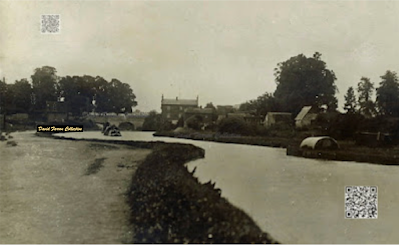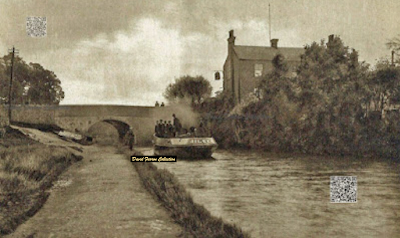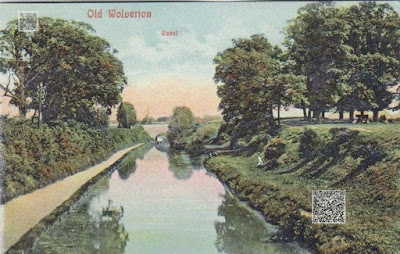Cosgrove Aqueduct
The is the second structure to be built, a replacement for the first brick structure. Engineer Benjamin Bevan employed by the canal company designed a replacement structure. Bevan adopted a tried and tested structure designed by Thomas Telford. The cast iron unit was made by Ketley Foundry of Coalbrookdale and transported by canal to Cosgrove and assembled and erected on site. The new structure was completed in January 1811 and now known as the "Iron Trunk".
The Wharf House
This Pub was originally called The Wharf House on the Old Wolverton Road. It was built in the early 19th century to serve the canal traffic. The wharf was built near the bridge on the Old Wolverton to Newport Pagnell road to allow loading/unloading on the Grand Junction Canal, goods were then placed onto the Stony Stratford to Newport Pagnell road. The "Wharf House" was renamed “The Locomotive Inn”, licensed in 1837 with the coming of the railway and the first passenger station built in 1838 to the south of "the Locomotive". In 1939 the Inn was renamed "The Galleon".

The Second Aqueduct built over the Great Ouse this post card dated 25 May 1907
A view looking towards The Galleon
Repairs being carried out to the Iron Trunk c.1908 This view is looking towards Old Wolverton
"The Iron Trunk" looking towards Old Wolverton
"The Wharf" predated "The Locomotive" being built by the owner of the Wharf

A winter Scene with the Great Ouse in full flow
Looking towards Cosgrove on the Iron Trunk towpath with Broadwaters to the right
The Locomotive Inn sold Roberts & Wilson's Ivinghoe Brewery Ales.
The Brewery was taken over by Benskins in 1927.
This Pub was originally called The Wharf House, now known as The Galleon.
It is situated on the Grand Union Canal.
There is a sign for Billiards towards the back.
Couple of houses adjacent.
Posted 1920 Roberts and Wilsons Brewery
The garden seen from a guest room. Post Card not dated
An unusual postcard with children on the tethered barge.
Post Card un-dated
A visitor to the Locomotive not impressed by what he see's or the lack off
With two barges tethered to keep fuel cost to a minimum or a possible "Butty" vessel where this had no from of propulsion.As diesel and steam replaced the tow horse in the early twentieth century, it became possible to move more cargo with the same manpower by towing a second unpowered boat, commonly referred to as a “butty”, “buttyboat” or “butty boat”. There was now no horse to look after, but someone had to steer the butty, unless on a wide canal such as the Grand Union Canal where the two boats could be roped side-to-side or ‘breasted up’, and handled as one while working locks.
A horse drawn barge with "butty boat" black and white and colourised
A Clear view of probably by now the called The Galleon
A media photo for local Gazette
A Woman holding a child posing for the Camera
Iron Trunk and Broadwater. Post mark 1908
Is this the Landlord of the Galleon on the road bridge?


"Dear Percy" 20 April 1925
Quite a modern scene showing cars in the Galleon car park c.1960
A press photo of the 'Locomotive Inn"
An unusal view looking towards Wolverton from the Old Wolverton Bridge


Two views looking to both direction Old Wolverton - Wolverton
A rustic view of an overgrown bank into the canal
A Summer view of the canal bank and bridge


Looking up and down Old Wolverton Road


Interesting post mark Christmas day 1907

 Written and sent from 78 Victoria Street Wolverton 1914
Written and sent from 78 Victoria Street Wolverton 1914
A very interesting view with a thatched garden feature photo. Unfortunatly date unknown
A Modern photo c2000
(RICHARD CROFT)Peeps of Wolverton
Dear Miss Turner, Hope you have got over your journey and having a fine time. With love. Bob.
Post Card c.1908
Postcard Card -Unposted
Postcard posted date 1929
Narrow Boat Linda crossing the River Ouse
Iron Trunk over flooded Cosgrove





















































































This is amazing, my Grandparents lived in Wolverton, they moved to Cosgrove. We would walk across the fields to the canal.
ReplyDelete